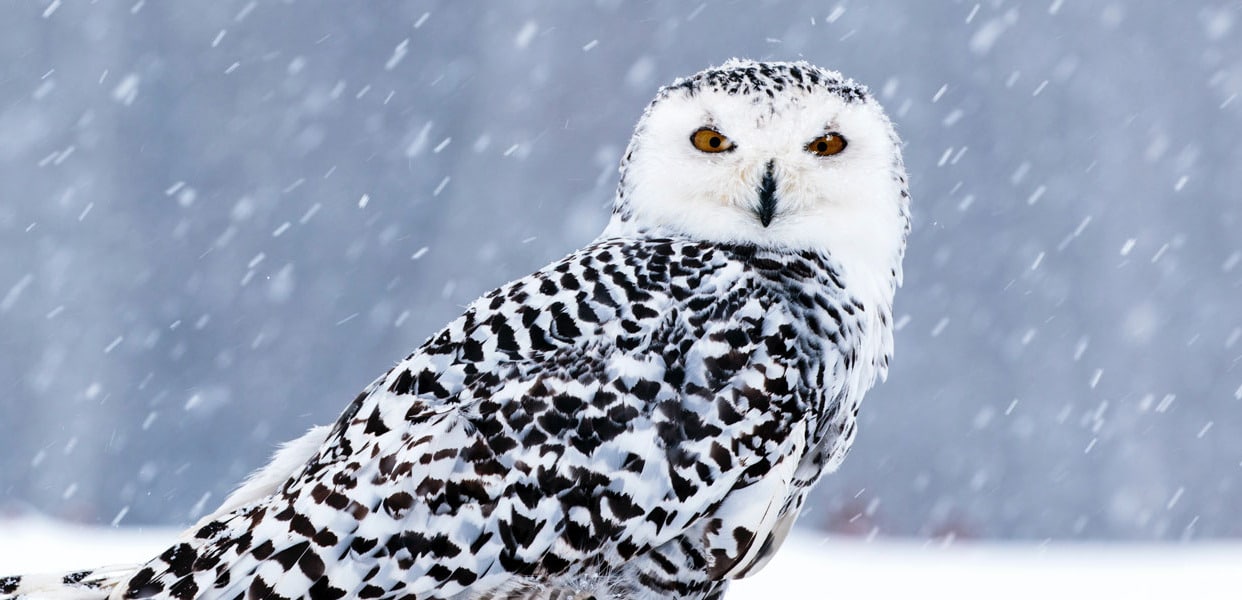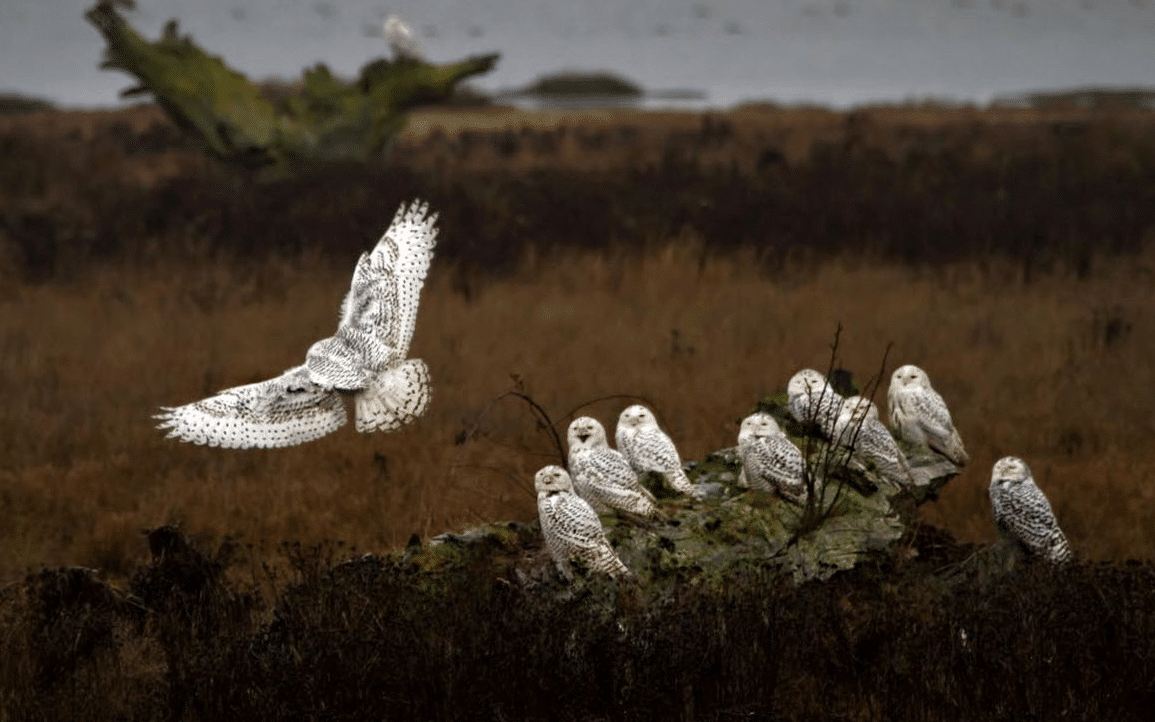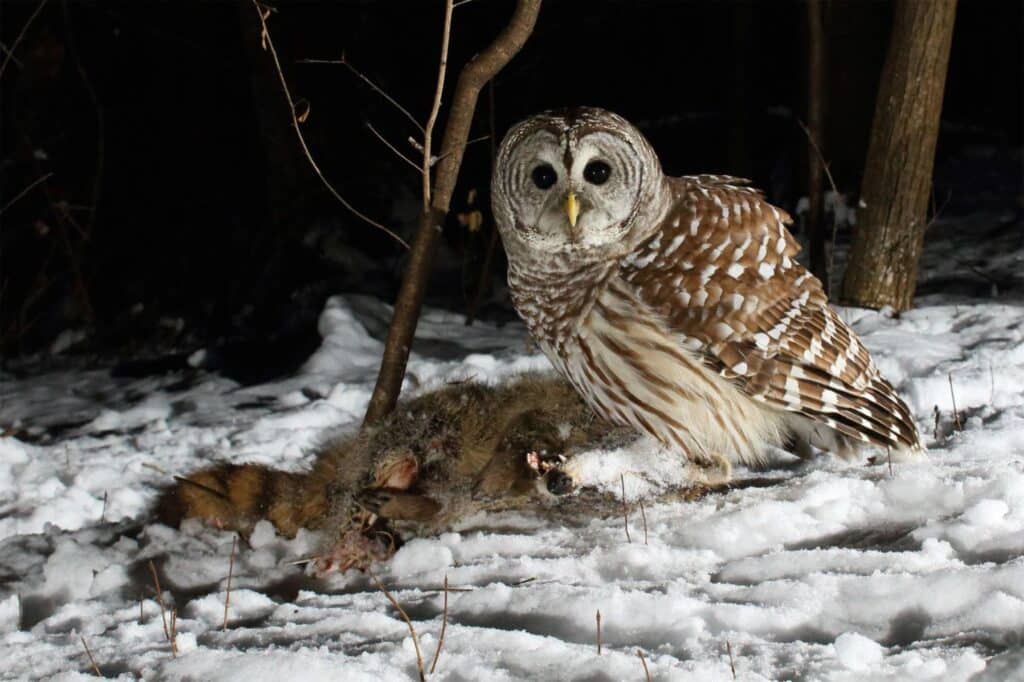Ever spotted an owl in winter? We bet you’ve wondered how these birds handle the cold. Many people think all animals hibernate or fly south when snow falls. But owls break this pattern in fascinating ways.
The truth is, no owls do not hibernate. While bears snooze and frogs freeze, owls stay active in the harshest conditions. But how do they manage it?
These birds have amazing tricks for winter survival that most people don’t know about. From special feathers to hunting techniques that work even in deep snow, owls have solved winter’s challenges without needing months of sleep.
We have studied these remarkable birds for years, and their winter survival strategies might surprise you. Let’s look at how owls stay active when other creatures can’t.
What is Hibernation and Why Owls Don’t Hibernate
Hibernation is when an animal sleeps through the winter to save energy because food is hard to find. Their body temperature, heart rate, and breathing slow down a lot. Animals like bears and ground squirrels do this to survive the cold months.
Why Don’t Owls Hibernate?
Owls stay active all winter long. They don’t need to hibernate because:
- They are warm-blooded: Owls can keep their body temperature steady even when it’s cold outside.
- They are expert hunters: Owls have amazing night vision and hearing, so they can still find mice, voles, and other prey—even under the snow!
- They have special feathers: Their thick, fluffy feathers keep them warm, like a built-in winter coat.
- They can change their diet: If their favorite food is hard to find, owls will eat whatever prey is available.
How Do Owls Survive the Winter Without Hibernating?

Owls stay active all winter instead of hibernating thanks to key adaptations:
Insulating Feathers
Owls grow extra feathers for winter. These thick, fluffy feathers work just like your winter coat. They trap warm air close to an owl’s body. This natural insulation keeps owls warm even when it’s very cold outside.
The feathers on their legs and feet are extra thick too. This helps protect these parts from freezing. Some owl types, like Snowy Owls, even have feathers that cover their toes!
Superior Hunting Skills
Owls eat small animals like mice and voles. These tiny creatures stay active under the snow all winter. Owls can hear the sounds of mice moving under snow with their amazing ears.
An owl’s ears are not the same on both sides of its head. One ear is higher than the other. This helps them tell exactly where a sound is coming from.
When they hear a mouse under the snow, they can swoop down and catch it even without seeing it.
Energy Conservation
- Roost in sheltered spots like tree cavities
- Move less during harsh weather
- Extract maximum nutrition from each meal
- Can slightly lower body temperature to save energy
Flexible Movement
Unlike strict migration patterns, owls move based on food availability. They follow prey populations rather than fixed seasonal routes.
For owls, staying active works better than hibernating. Their specialized bodies and hunting skills allow them to thrive in winter conditions where other animals must sleep or leave.
Do All Owls Migrate During Winter?

No, not all owls migrate. Most stay in their habitats year-round, while a few species move based on food availability.
Here’s the breakdown:
1. Owls That Stay Put
Most owls, like Great Horned Owls and Barn Owls, remain in the same area all year. They survive winter by:
- Hunting actively: They use sharp night vision to catch mice, voles, and rabbits, even under snow.
- Staying warm: Thick, fluffy feathers act like a winter coat.
- Sheltering in tree cavities or barns to avoid harsh weather.
2. Owls That Migrate or Move
A few species migrate, but it’s rare and linked to food shortages:
- Snowy Owls: Arctic dwellers that sometimes fly south to Canada or the northern U.S. when lemming populations drop.
- Short-Eared Owls: May move to open fields with more rodents.
- Northern Saw-Whet Owls: Some migrate short distances, but many stay put.
3. Snowy Owls: The Exception
Snowy Owls have irregular migrations called “irruptions”:
- Triggered by food shortages or overpopulation in the Arctic.
- Young owls often travel farthest, sometimes reaching the U.S. Midwest or Northeast.
- No set routes: They follow food, not fixed paths, and may stay north if prey is plentiful.
Common Misconceptions About Owls and Winter
There are several common misconceptions about owls and how they handle winter. Let’s address some of these myths and clarify the facts:
Owls Hibernate in Winter:
- Myth: Owls hibernate during winter to conserve energy.
- Fact: Owls do not hibernate. They remain active year-round, using strategies like conserving energy, reducing activity, and roosting in sheltered areas.
All Owls Migrate in Winter:
- Myth: All owl species migrate to avoid cold temperatures.
- Fact: Not all owls migrate. Species like the Great Horned Owl and Barn Owl are non-migratory and stay in the same area year-round, even in cold weather.
Owls Are Inactive in Winter:
- Myth: Owls become inactive and rest all winter.
- Fact: Owls remain active hunters. While they may reduce activity during extreme cold, they continue to hunt, especially in low light or snowy conditions.
All Owls Thrive in Cold Weather:
- Myth: All owls are equally capable of thriving in cold temperatures.
- Fact: Not all owls are adapted to survive in extreme cold. Smaller owls like the Barn Owl may struggle with deep snow, while larger owls like the Snowy Owl are specially adapted for cold environments.
Owls Don’t Need to Adapt to Cold Conditions:
- Myth: Owls simply endure winter without any special adaptations.
- Fact: Owls grow extra down feathers in the fall for insulation and rely on specialized hunting techniques (e.g., using their hearing to find prey under snow) to survive winter conditions.
Owls Only Live in Warm Climates:
- Myth: Owls are found only in warm, temperate regions.
- Fact: Owls can live in a variety of climates, including cold, snowy regions. Species like the Snowy Owl are native to the Arctic and thrive in freezing temperatures.
The Bottom Line
So now we know the answer to our question: owls don’t hibernate. Instead, they’ve developed remarkable adaptations that let them thrive during winter’s challenges.
Unlike bears or groundhogs, owls stay active year-round thanks to their thick insulating feathers, exceptional hunting abilities, and smart energy management. They’ve found their own path to winter survival.
Next time you hear a hoot on a cold winter night, remember there’s an owl out there, wide awake and hunting while other creatures sleep beneath the snow.
What winter wildlife have you spotted in your area? Leave a comment below sharing your observations!


















